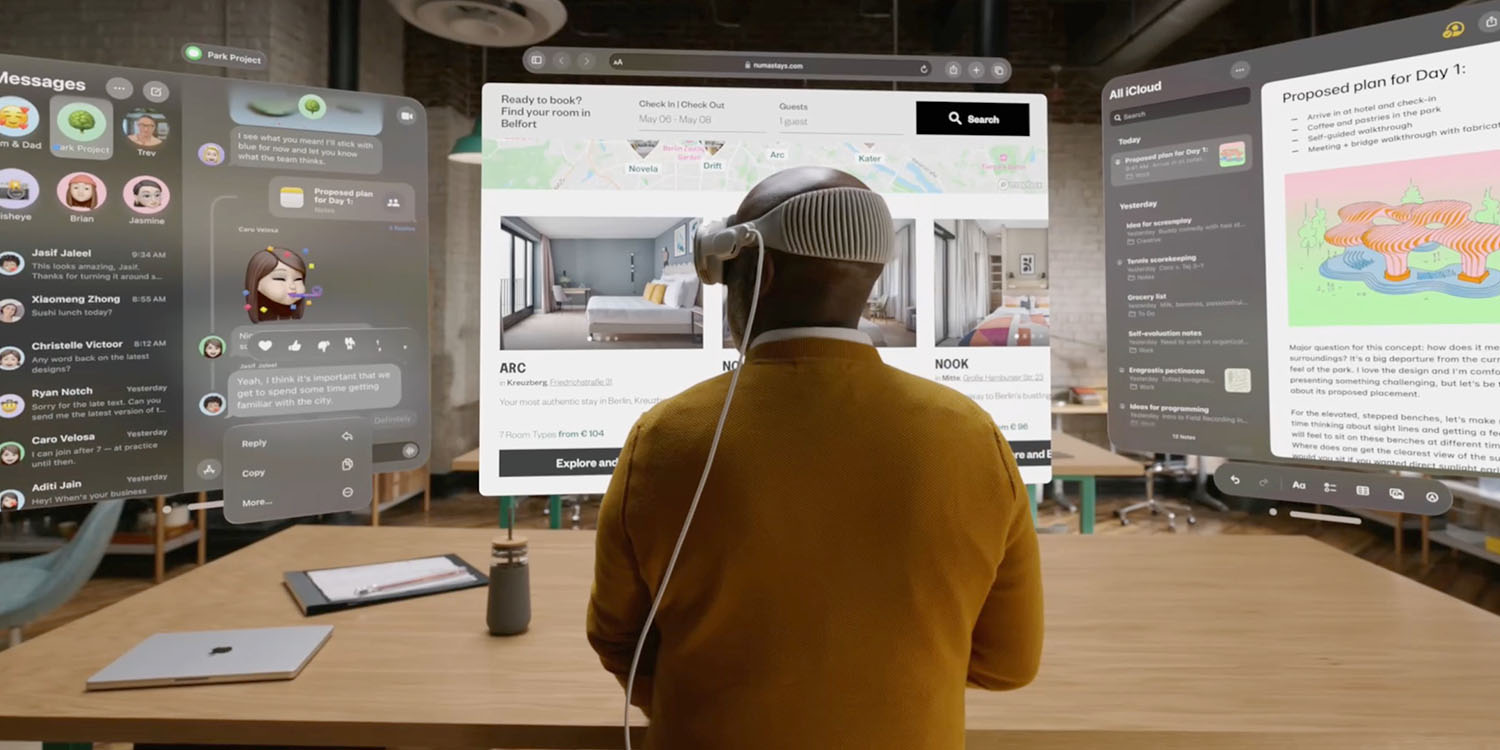
The highly sophisticated Vision Pro display tech is likely to constrain production of the device, suggests a new report.
But before we get into that, we first need to clear up some confusion about the nature of the display technology used for the devices …
What does Apple say about Vision Pro displays?
The extremely high-resolution displays are one of the many features that set Vision Pro apart from its competitors. Here’s what Apple has to say about the twin displays (one for each eye):
Featuring a breakthrough ultra-high-resolution display system built on top of an Apple silicon chip, Vision Pro uses micro-OLED technology to pack 23 million pixels into two displays, each the size of a postage stamp, with wide color and high dynamic range. This technological breakthrough, combined with custom catadioptric lenses that enable incredible sharpness and clarity, delivers jaw-dropping experiences […]
[It] fits 64 pixels in the space of a single iPhone pixel. They’re just seven and a half microns wide, [providing] more pixels than a 4K TV for each eye […]
It enables video to be rendered at true 4K resolution with wide color and high dynamic range, all at massive scale. And fine text looks super sharp from any angle.
Confusion about the displays
Some media outlets describe the displays using the generic term OLED, which is technically correct but incomplete, while others are mistakenly referring to it as microLED – which is completely wrong. microLED is not OLED at all, and it will likely be years before the tech makes it into products.
However, Apple must take much of the blame for this. First, you have to delve into the small print to find that the displays use a technology known as OLEDoS. Second, the company says the displays use “micro-OLED technology” – that is, “micro hyphen OLED”, not “micro no hyphen no O LED”!
To clear up the confusion, we need to begin with a quick (recent) history lesson …
A quick history of AR/VR headset display tech
The display roadmap for AR/VR headsets looks like this:
- AMOLED
- Fast LCD with conventional backlighting
- Fast LCD with miniLED backlighting
- OLEDoS
So what does all this actually mean?
Early headsets had AMOLED displays, that is active matrix OLED, or – to spell it out fully – active matrix organic light emitting diodes. With AMOLED, organic compounds form the electroluminescent material, while the “active matrix” part refers to the tech used to switch the pixels on and off. AMOLED provides a decent response speed and good color reproduction, but is rather expensive to manufacture.
As companies tried to make headsets into a more mass-market product, they needed to reduce manufacturing costs. So the next step in development was from AMOLED to Fast LCD. This is essentially a conventional Liquid Crystal Display, but with an ultra-low-viscosity liquid, for faster refresh rates. These displays are much cheaper to produce.
Next up was Fast LCD with miniLED backlighting, which is the display tech Apple uses for current MacBooks. This replaces conventional backlighting with miniLED – that is to say, much smaller LEDs to provide more precise control.
Finally, we come to OLEDoS, aka OLED on silicon. This is the most advanced form of headset display tech, and is coming to both the Meta Quest 3, and Apple’s Vision Pro. While AMOLED uses thin-film transistors as the backplane, OLEDoS instead uses monocrystalline silicon. The advantage? Pixels are much smaller (cf. Apple’s comment on 64 VP pixels in the size of one iPhone pixel) – plus OLEDoS tech uses less power, and weighs less.
This is why Vision Pro production will be constrained
OLEDoS is sophisticated technology, and very tricky to manufacture. This places tight limits on the number of units that can be made each quarter.
Vision Pro OLEDoS displays are made by Sony, and The Elec reports that the company’s absolute maximum production capacity is 900,000 units per year. Given that Vision Pro needs two of them, that caps production at 450,000 units per year.
That is, says the piece, the absolute maximum.
Japanese tech giant Sony, which is supplying the panel used by Apple for its new mixed reality device Vision Pro, has a capacity of 900,000 units of these panels per year, TheElec has learned […]
At most, the Japanese company can supply between 100,000 to 200,000 units of OLEDoS per quarter.
While there are other manufacturers of OLEDoS such as China’s SeeYa, it is unlikely that Apple will use other suppliers at the current time.
The lower end of that would limit Vision Pro supply to 200,000 per year (100K displays/quarter = 400K displays/year, divided by two).
Expect delays at launch
Of course, given the $3,500+ price tag, then even 200,000 units per year will probably exceed demand for the device. Most of us won’t be buying one.
However, those who will buy one likely want it on day one – so unless Sony can build up a significant stock before production begins, some buyers may end up waiting a while.
FTC: We use income earning auto affiliate links. More.



Comments